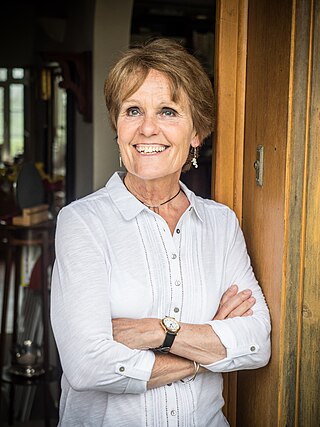
A model organism is a non-human species that is extensively studied to understand particular biological phenomena, with the expectation that discoveries made in the model organism will provide insight into the workings of other organisms. Model organisms are widely used to research human disease when human experimentation would be unfeasible or unethical. This strategy is made possible by the common descent of all living organisms, and the conservation of metabolic and developmental pathways and genetic material over the course of evolution.
Sex differences in medicine include sex-specific diseases or conditions which occur only in people of one sex due to underlying biological factors ; sex-related diseases, which are diseases that are more common to one sex ; and diseases which occur at similar rates in males and females but manifest differently according to sex.
Rat Park was a series of studies into drug addiction conducted in the late 1970s and published between 1978 and 1981 by Canadian psychologist Bruce K. Alexander and his colleagues at Simon Fraser University in British Columbia, Canada.

Medical research, also known as health research, refers to the process of using scientific methods with the aim to produce knowledge about human diseases, the prevention and treatment of illness, and the promotion of health.

The Wistar Institute is an independent, nonprofit research institution in biomedical science with special focuses in oncology, immunology, infectious disease and vaccine research. Located on Spruce Street in Philadelphia’s University City neighborhood, Wistar was founded in 1892 as a nonprofit institution to focus on biomedical research and training.

Rodents are commonly used in animal testing, particularly mice and rats, but also guinea pigs, hamsters, gerbils and others. Mice are the most commonly used vertebrate species, due to their availability, size, low cost, ease of handling, and fast reproduction rate.
Emery Neal Brown is an American statistician, computational neuroscientist, and anesthesiologist. He is the Warren M. Zapol Professor of Anesthesia at Harvard Medical School and at Massachusetts General Hospital (MGH), and a practicing anesthesiologist at MGH. At MIT he is the Edward Hood Taplin Professor of Medical Engineering and professor of computational neuroscience, the associate director of the Institute for Medical Engineering and Science, and the Director of the Harvard–MIT Program in Health Sciences and Technology.

Gender-biased diagnosing is the idea that medical and psychological diagnosis are influenced by the gender of the patient. Several studies have found evidence of differential diagnosis for patients with similar ailments but of different sexes. Female patients face discrimination through the denial of treatment or miss-classification of diagnosis as a result of not being taken seriously due to stereotypes and gender bias. According to traditional medical studies, most of these medical studies were done on men thus overlooking many issues that were related to women's health. This topic alone sparked controversy and brought about question to the medical standard of our time. Popular media has illuminated the issue of gender bias in recent years. Research that was done on diseases that affected women more were less funded than those diseases that affected men and women equally.

Robert F. Murphy is Ray and Stephanie Lane Professor of Computational Biology Emeritus and Director of the M.S. Program in Automated Science at Carnegie Mellon University. Prior to his retirement in May 2021, he was the Ray and Stephanie Lane Professor of Computational Biology as well as Professor of Biological Sciences, Biomedical Engineering, and Machine Learning. He was founding Director of the Center for Bioimage Informatics at Carnegie Mellon and founded the Joint CMU-Pitt Ph.D. Program in Computational Biology. He also founded the Computational Biology Department at Carnegie Mellon University and served as its head from 2009 to 2020.
Rebecca M. Jordan-Young, is an American feminist scientist and gender studies scholar. Her research focuses on social medical science, sex, gender, sexuality, and epidemiology. She is an Associate Professor of Women’s, Gender, and Sexuality Studies at Barnard College.

Rochelle (Shelley) Buffenstein is an American comparative biologist currently working as Research Professor at the University of Illinois Chicago. Previously, she was a senior principal investigator at Calico Life Sciences, an Alphabet, Inc. funded research and development company investigating the biology that controls aging and lifespan where she used the extraordinarily long-lived cancer resistant naked mole-rat as an attractive counter-example to the inevitability of mammalian aging; for at ages greatly exceeding the expected maximum longevity for this mouse-sized rodent, they fail to exhibit meaningful changes in age-related risk of dying or physiological decline. As such these rodents likely provide the blueprint for how to stave off myriad adverse effects of aging and provide proof of concept that age-related health decline can be avoided in humans.

Carolyn M. Mazure is an American psychologist and the Norma Weinberg Spungen and Joan Lebson Bildner Professor of Psychiatry and Psychology at the Yale School of Medicine. She created and directs Women’s Health Research at Yale — Yale’s interdisciplinary research center on health and gender.

Gina Rippon is a British neurobiologist and feminist. She is a professor emeritus of cognitive neuroimaging at the Aston Brain Centre, Aston University, Birmingham. Rippon has also sat on the editorial board of the International Journal of Psychophysiology. In 2019, Rippon published her book, Gendered Brain: The New Neuroscience that Shatters the Myth of the Female Brain, which investigates the role of life experiences and biology in brain development.
Joni Wallis is a cognitive neurophysiologist and Professor in the Department of Psychology at the University of California, Berkeley.

Janine Austin Clayton is an American ophthalmologist. She is the NIH associate director for research on women's health and director of the Office of Women's Health. Clayton was previously the deputy clinical director of the National Eye Institute.
Kent L. Thornburg is an American scientist, researcher and professor. He lives in Portland, Oregon and works at Oregon Health & Science University (OHSU), in the School of Medicine. He is the director for both the OHSU Center for Developmental Health and the Moore Institute for Nutrition & Wellness
Jeffrey S. Mogil, FCAHS, FRSC is a Canadian neuroscientist and the E.P. Taylor Professor of Pain Studies and Canada Research Chair in the Genetics of Pain at McGill University. He is known for his work in the genetics of pain, for being among the first scientists to demonstrate sex differences in pain perception, and for identifying previously unknown factors and confounds that affect the integrity of contemporary pain research. He has an h-index of 90.

Arthur Palmer Arnold is an American biologist who specializes in sex differences in physiology and disease, genetics, neuroendocrinology, and behavior. He is Distinguished Professor of Integrative Biology & Physiology at the University of California, Los Angeles (UCLA). His research has included the discovery of large structural sex differences in the central nervous system, and he studies of how gonadal hormones and sex chromosome genes cause sex differences in numerous tissues. His research program has suggested revisions to concepts of mammalian sexual differentiation and forms a foundation for understanding sex difference in disease. Arnold was born in Philadelphia.

Adropin is a peptide encoded by the energy homeostasis-associated gene ENHO, which is highly conserved across mammals.

Carrie Wolinetz is the Principal and Chair of Lewis-Burke Associate's Health and Bioscience Innovation Policy Practice Group. She formerly served in the National Institutes of Health as Senior Advisor to the Office of the Director, Associate Director for Science Policy, and Chief of Staff to Francis Collins. She also led the inaugural Health and Sciences division in the White House Office of Science and Technology Policy.













